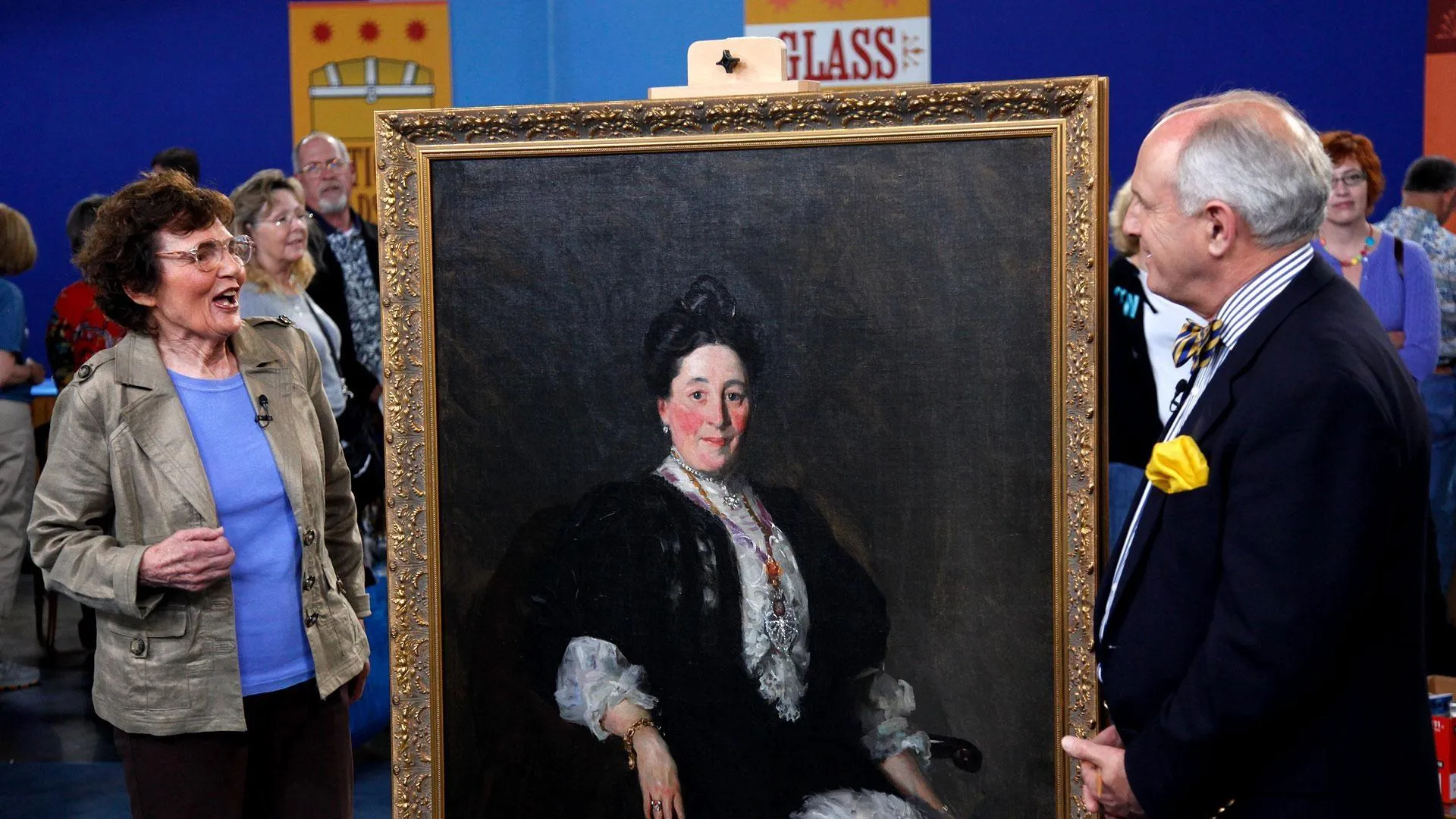GUEST: I received these as a gift from my mother-in-law, who received them as a gift from her mother-in-law. My grandparents-in-law were very active in the Hopi reservations in Arizona. They sponsored children's education and that kind of thing during the early '70s, late '60s. And during that period of time, they befriended an artist by the name of Charles Loloma. My husband's grandfather purchased these two bracelets for his grandmother. She gave them to her daughter-in-law. And, actually, I have to confess, my mother-in-law gave them to my daughter, but I didn't trust her with them, so I took them from her.
APPRAISER: Sounds like a good plan.
GUEST: This is a copy of the original receipt. The silver one was purchased in 1977 for $750. And the gold one was purchased in '76 for $2,500.
APPRAISER: These bracelets were made in Arizona in the 1970s. Charles Loloma was born in 1921, and he died in 1991. The bracelets were made using a technique called sandcasting. A piece of rock is cut into a flat slab, and then bracelet is carved out flat in the rock. And then the silver or the gold is poured into that channel that's carved into the rock, and then it's bent to shape.
GUEST: So there's really no sand involved. It's more like rock casting.
APPRAISER: Yeah, and it's real particular to the Navajo and the Hopi, because that's where the stone comes from. These bracelets are as much pieces of sculpture as they are jewelry. All his work is just incredible. This is a little different for him. He usually does pieces with a lot of lapidary work or a lot of stones in them and around them. These are nearly all metal. They're real striking and real fine examples of his work. Now, the catch is, a great show was done several years ago of his work, and people decided to capitalize on that in illegal ways. And so there are a lot of fakes on the market.
GUEST: Oh, really?
APPRAISER: And the question every time you see one is, is this real or is it not real? Well, first of all, both these bracelets, they are marked, and it's the proper mark. However, the marks can be copied. So, it all becomes about provenance and the history of these bracelets. And you have all the history. You have the receipt made out to a relative, you know everything about them. Great examples-- a sterling piece with turquoise, and a good piece with turquoise. Walk into a gallery, try to buy one of these, $20,000, $40,000.
GUEST: Holy moly!
APPRAISER: Yeah, nice.
GUEST: Oh, my goodness. The little one's $20,000?
APPRAISER: Yeah, yeah. A similar one to this in silver recently sold for about $22,000.
GUEST: Oh, my goodness.
APPRAISER: Now, I've knocked it down a little bit, because this one's slightly plainer.
GUEST: Wow. And, you know, we just stumbled across the receipt recently because we're moving my mother-in-law, and we were packing her house, and we just found this receipt, like, three weeks ago.
APPRAISER: Don't lose it.
GUEST: I won't.
APPRAISER: It's as important as the bracelets.
GUEST: Wow, I didn't expect to hear that.












